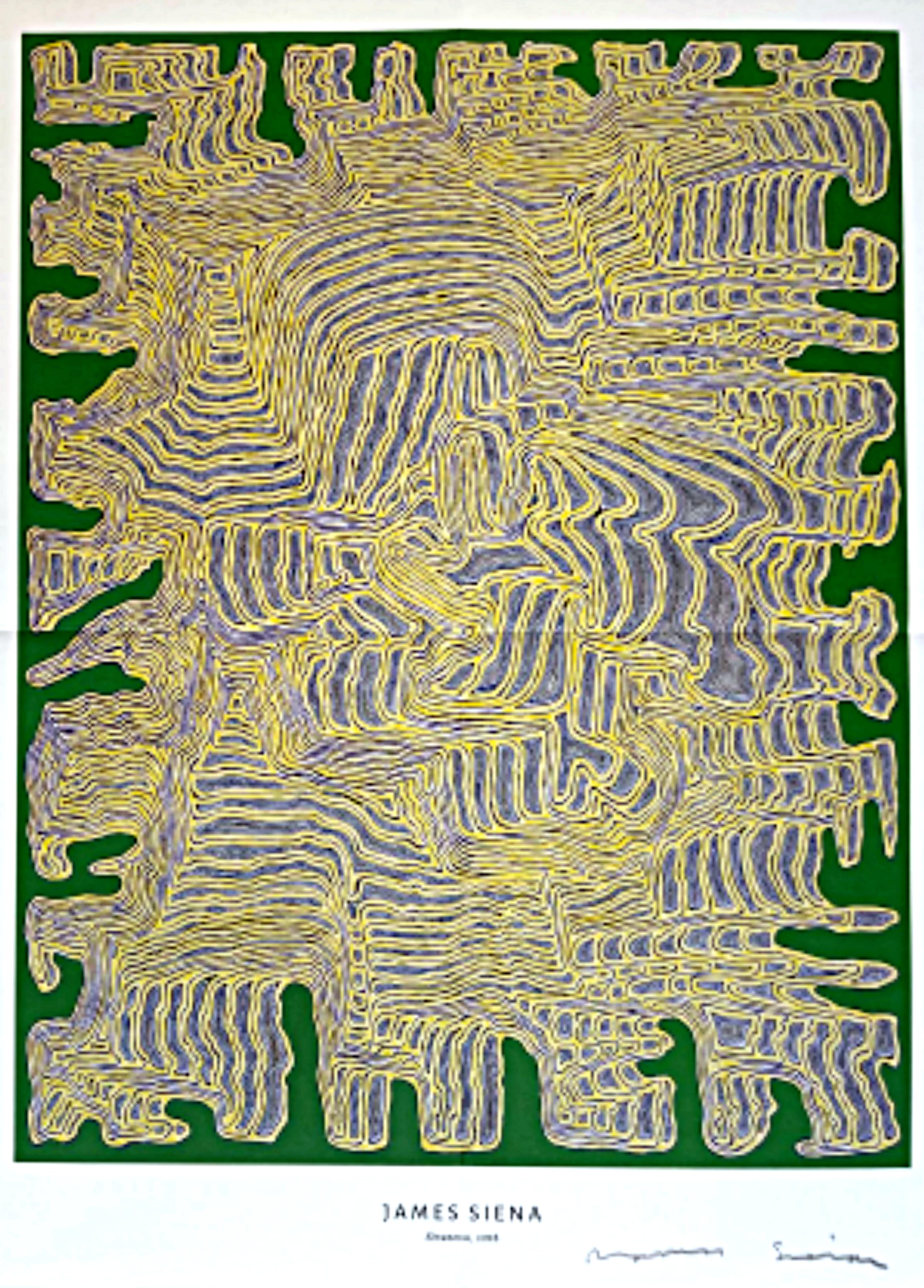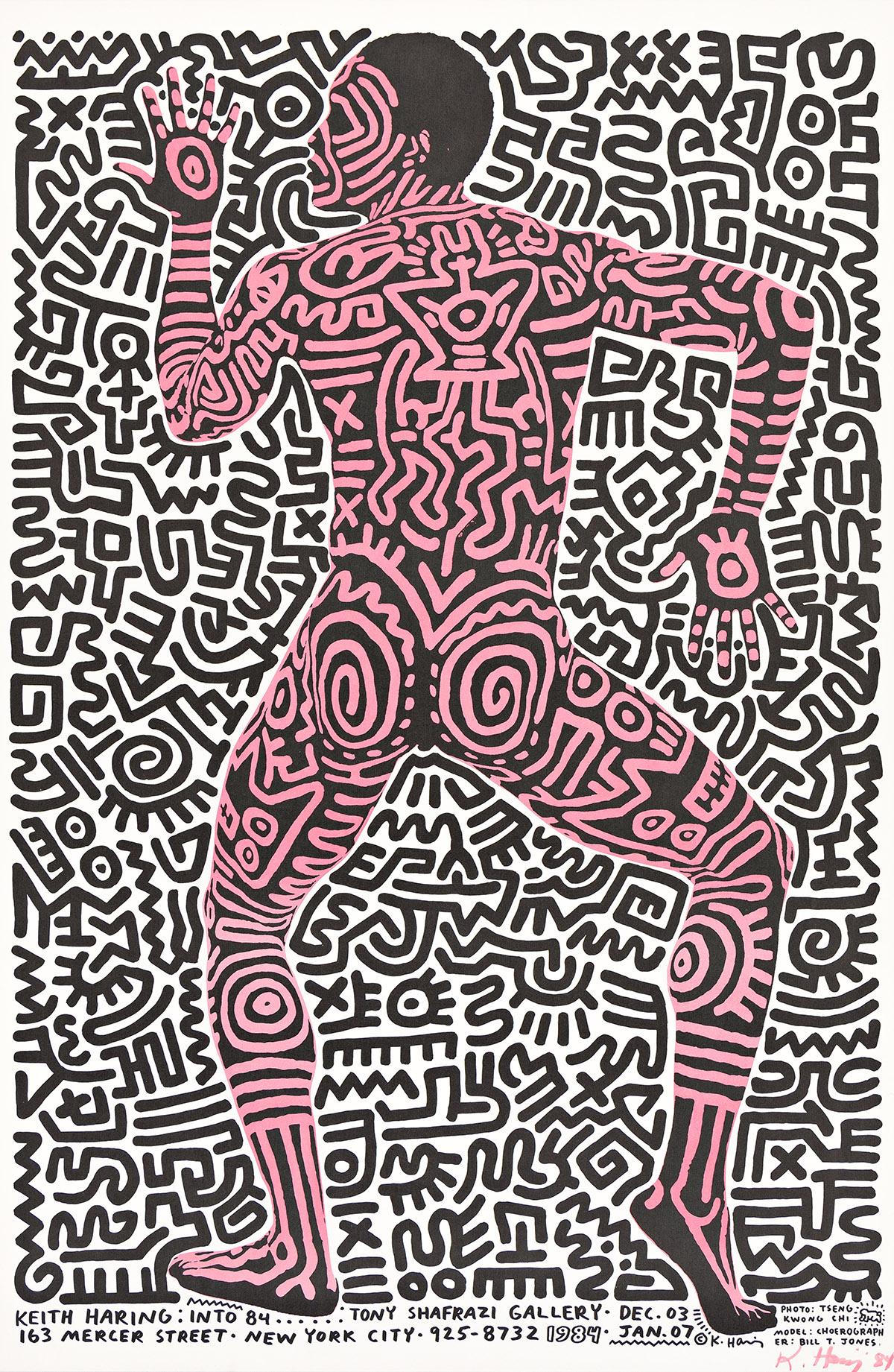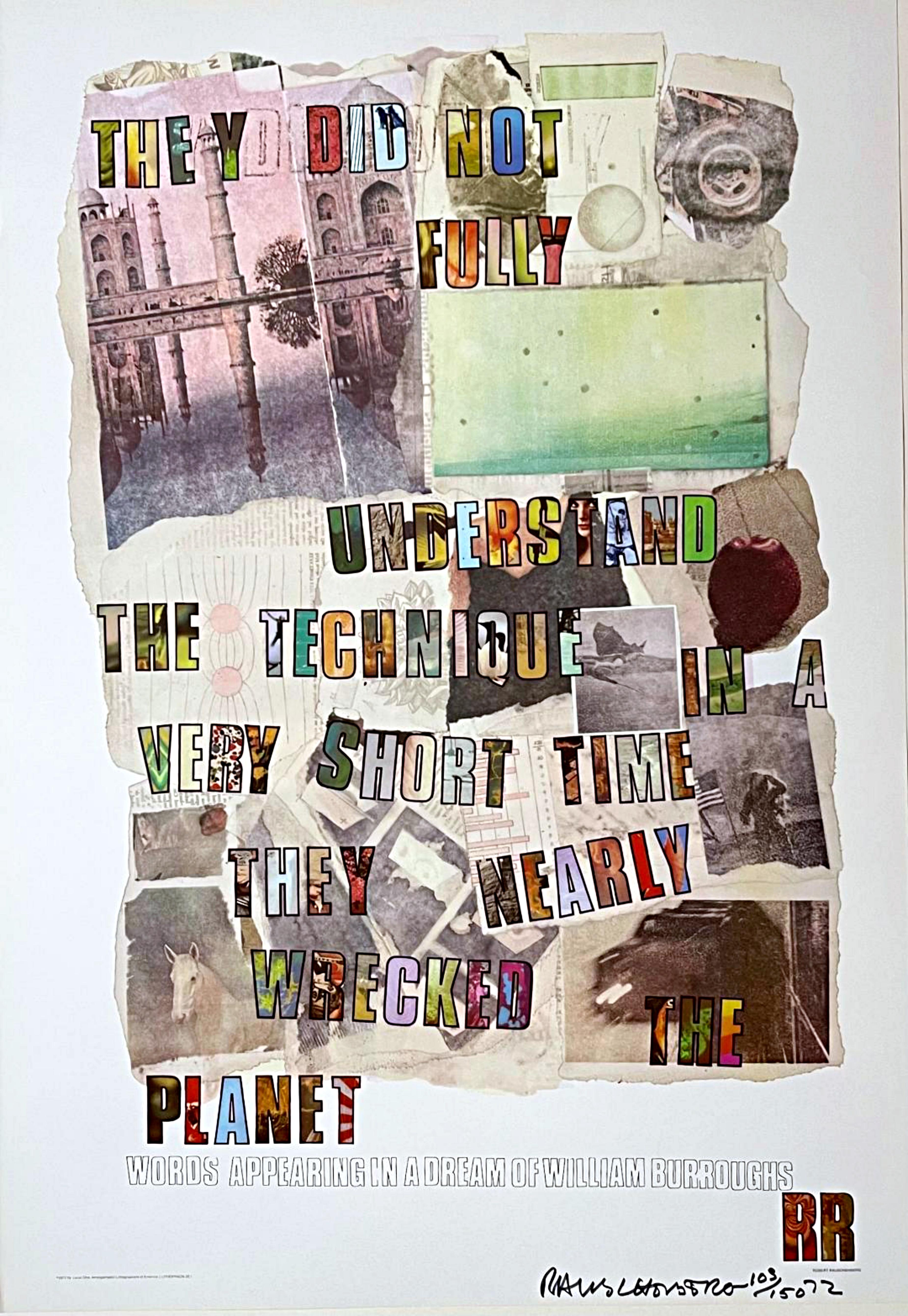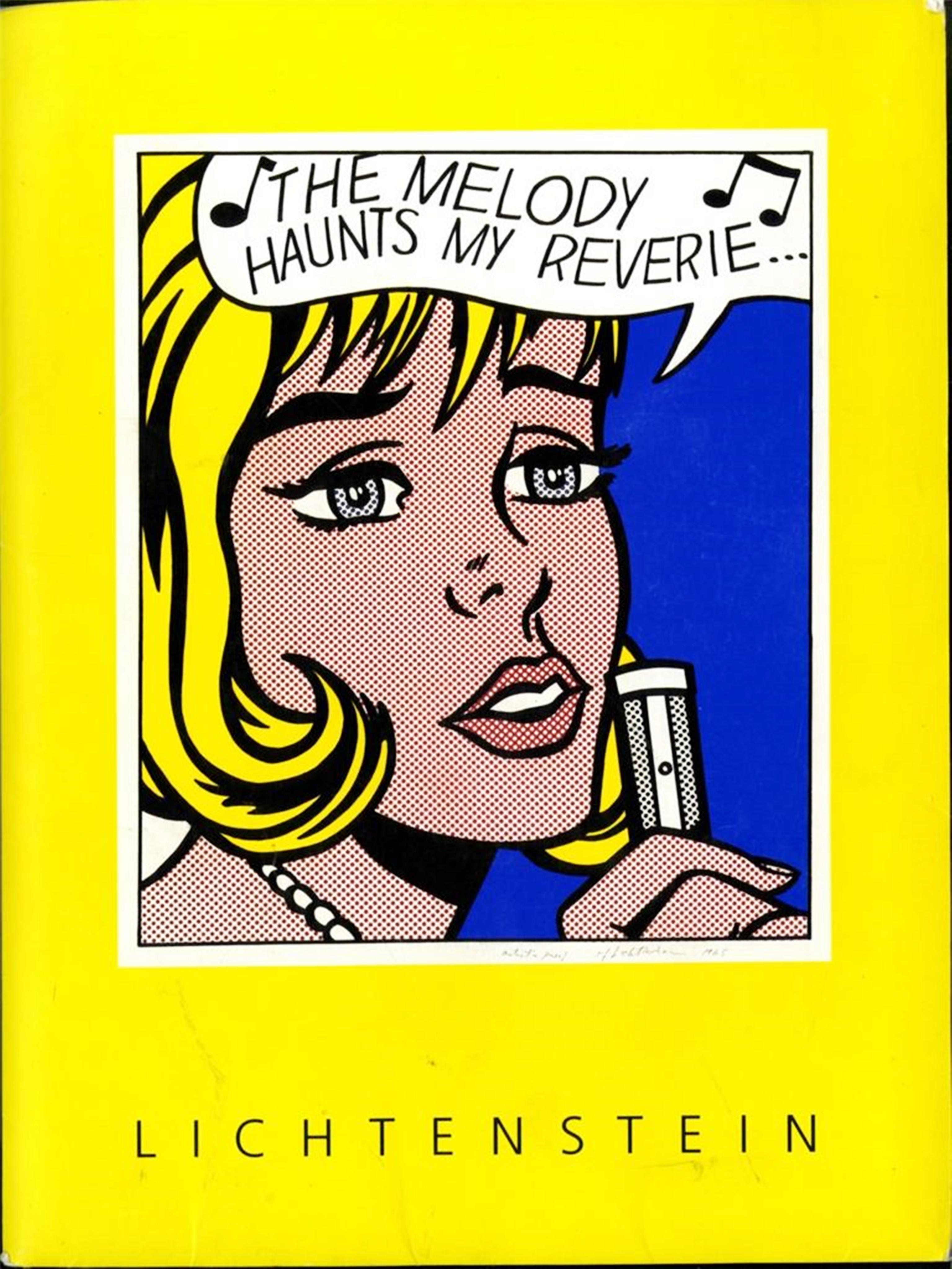Roy LichtensteinLimited Ed. St. Louis Art museum poster Hand Signed & dated by Roy Lichtenstein1981
1981
About the Item
- Creator:Roy Lichtenstein (1923 - 1997, American)
- Creation Year:1981
- Dimensions:Height: 37 in (93.98 cm)Width: 27 in (68.58 cm)Depth: 0.5 in (1.27 cm)
- Medium:
- Movement & Style:
- Period:
- Condition:This work is framed under glass; not examined out of original vintage frame, but appears to be in excellent condition other than a few tiny spots.
- Gallery Location:New York, NY
- Reference Number:1stDibs: LU1745214348042
Roy Lichtenstein
Roy Lichtenstein is one of the principal figures of the American Pop art movement, along with Andy Warhol, James Rosenquist, Claes Oldenburg and Robert Rauschenberg.
Drawing inspiration from comic strips, Lichtenstein appropriated techniques commercial printing in his paintings, introducing a vernacular sensibility to the visual landscape of contemporary art. He employed visual elements such as the halftone dots that comprise a printed image, and a comic-inspired use of primary colors gave his paintings their signature “Pop” palette.
Born and raised in New York City, Lichtenstein enjoyed Manhattan’s myriad cultural offerings and comic books in equal measure. He began painting seriously as a teenager, studying watercolor painting at the Parsons School of Design in the late 1930s, and later at the Art Students League, where he worked with American realist painter Reginald Marsh. He began his undergraduate education at Ohio State University in 1940, and after a three-year stint in the United States Army during World War II, he completed his bachelor’s degree and then his master’s in fine arts. The roots of Lichtenstein’s interest in the convergence of high art and popular culture are evident even in his early years in Cleveland, where in the late 1940s, he taught at Ohio State, designed window displays for a department store and painted his own pieces.
Working at the height of the Abstract Expressionist movement in the 1950s, Lichtenstein deliberately eschewed the sort of painting that was held in high esteem by the art world and chose instead to explore the visual world of print advertising and comics. This gesture of recontextualizing a lowbrow image by importing it into a fine-art context would become a trademark of Lichtenstein’s artistic style, as well as a vehicle for his critique of the concept of good taste. His 1963 painting Whaam! confronts the viewer with an impact scene from a 1962-era issue of DC Comics’ All American Men of War. Isolated from its larger context, this image combines the playful lettering and brightly colored illustration of the original comic with a darker message about military conflict at the height of the Cold War. Crying Girl from the same year featured another of Lichtenstein’s motifs — a woman in distress, depicted with a mixture of drama and deadpan humor. His work gained a wider audience by creating a comic-inspired mural for the New York State Pavilion of the 1964 World's Fair, he went on to be represented by legendary New York gallerist Leo Castelli for 30 years.
In the 1970s and ’80s, Lichtenstein experimented with abstraction and began exploring basic elements of painting, as in this 1989 work Brushstroke Contest. In addition to paintings in which the brushstroke itself became the central subject, in 1984 he created a large-scale sculpture called Brushstrokes in Flight for the Port Columbus International Airport in Ohio. Still Life with Windmill from 1974 and the triptych Cow Going Abstract from 1982 both demonstrate a break from his earlier works where the subjects were derived from existing imagery. Here, Lichtenstein paints subjects more in line with the norms of art history — a pastoral scene and a still life — but he has translated their compositions into his signature graphic style, in which visual elements of printed comics are still a defining feature.
Lichtenstein’s work is represented in the collections of the Metropolitan Museum of Art, the Museum of Modern Art, Tate Modern, and many others. He was awarded National Medal of Arts in 1995, two years before he passed away.
Find a collection of Roy Lichtenstein prints, drawings and more on 1stDibs.
- ShippingRetrieving quote...Ships From: New York, NY
- Return PolicyA return for this item may be initiated within 1 day of delivery.
- James SIena at PACE poster Hand signed by James Siena complex linear abstractionBy James SienaLocated in New York, NYJames Siena at PACE Gallery, 2019 Offset lithograph exhibition invitation (Hand signed by James Siena) 19 1/2 × 14 1/2 inches Unframed This exquisite fold...Category
2010s Abstract Geometric Abstract Prints
MaterialsOffset, Graphite, Pencil, Lithograph
- Dream of William Burroughs (rare 1970s limited edition lithograph) for Earth DayBy Robert RauschenbergLocated in New York, NYROBERT RAUSCHENBERG Dream of William Burroughs, 1972 Offset lithograph 34 1/2 × 24 inches Edition 103/150 Signed, dated and numbered in black marker on the front Unframed Wonderful early 1970s print Words appearing in a dream of William Burroughs Co-published by Automation House and E.A.T., produced by Local One, Amalgamated Lithographers of America, New York Signed and numbered 103/150 in black marker This work is registered with the Robert Rauschenberg archives, reference number: RRF 72.E001 Text reads: THEY DID NOT FULLY UNDERSTAND THE TECHNIQUE. IN A VERY SHORT TIME THEY NEARLY WRECKED THE PLANET. More information about this work from the Rauschenberg Foundation: Lithopinion 26, the current affairs and graphic arts journal, dedicated its summer 1972 edition to the subject of “Our Transportation Mess.” Among the contributors were Theodore Kheel, who was a lawyer, leading labor mediator and arbitrator, as well as an environmentalist, and Senator Edward Kennedy. Kheel commissioned artists such as Romare Bearden, Christo, and Rauschenberg, his friend and client, to address the transportation system in the United States. Rauschenberg’s contribution was inspired by a dream that William Burroughs, the Beat writer, had described to him, and which resulted in the lithograph Dream of William Burroughs (1972) published by Experiments in Art and Technology (E.A.T.). Surrounded by images of various modes of transportation, the lithograph includes the words: “They did not fully understand the technique / in a very short time they nearly wrecked the planet.” As an E.A.T. board member, Kheel understood, like Rauschenberg, that environmentalism and technology were not conflicting views but symbiotic relationships. In Lithopinion 26, E.A.T. stated that it “supports technology when it tries to help people achieve their human potentiality [and] criticizes it when it doesn’t.” About Robert Rauschenberg: Robert Rauschenberg ushered in a new era of postwar American art in the wake of Abstract Expressionism. His approach, along with that of his contemporary Jasper Johns, was sometimes termed “Neo-Dada,” due to its relation to both European forebears and the physical gestures of American Abstract Expressionists. His Combine works (1954 to early 1960s) blurred the distinctions between painting and sculpture, as their flat surfaces were augmented with discarded materials and appropriated images. Rauschenberg also worked with photography, printmaking, papermaking, and performance, the last of which resulted in a number of collaborations with choreographers, including Merce Cunningham, Paul Taylor, and Trisha Brown. Rauschenberg was among the founding members of the innovative group Experiments in Art and Technology (E.A.T.) in 1966, and in 1984 he established the Rauschenberg Overseas Culture Interchange (ROCI) to bring art to communities around the world, saying, “I feel strong in my beliefs, based on my varied and widely traveled collaborations, that a one-to-one contact through art contains potent peaceful powers, and is the most non-elitist way to share exotic and common information, seducing us into creative mutual understandings for the benefit of all.” Rauschenberg’s nontraditional art practice and creative energy generated an enduring influence that impacted generations of artists, as noted by art historian Branden W. Joseph: “Rauschenberg’s was a position with which artists across the board were confronted and to which they almost necessarily had to respond. … Rauschenberg’s work served as a stimulus, an impetus and a challenge.” Robert Rauschenberg was born in 1925, in Port Arthur, Texas and died on Captiva Island, Florida in 2008. He has had numerous exhibitions worldwide, including “Robert Rauschenberg: A Retrospective,” Solomon R. Guggenheim Museum, New York (1997, traveled to Menil Collection, Contemporary Arts Museum, and Museum of Fine Arts, Houston, Museum Ludwig, Cologne and Guggenheim Museum, Bilbao, through 1999); “Combines,” Metropolitan Museum of Art, New York (2005, traveled to Museum of Contemporary Art, Los Angeles, Centre Pompidou, Paris, and Moderna Museet, Stockholm in 2007); “Cardboards and Related Pieces,” Menil Collection, Houston (2007); “Traveling ‘70–‘76,” Museu de Arte Contemporânea de Serralves, Porto (2008, traveled to Haus der Kunst, Munich, and Madre, Naples in 2009); “Gluts,” The Peggy Guggenheim Collection, Venice (2009, traveled to The Tinguely Museum, Basel, Guggenheim Museum Bilbao, and Villa e Collezione Panza, Varese in 2010); and “Botanical Vaudeville,” Inverleith House, Royal Botanic Garden, Edinburgh (2011). Gagosian Gallery first exhibited Robert Rauschenberg’s work in 1986. About William Burroughs William S. Burroughs was a Beat Generation writer known for his startling, nontraditional accounts of drug culture...Category
1970s Pop Art Abstract Prints
MaterialsOffset, Permanent Marker, Lithograph
- Vintage Museum Press Kit (National Gallery, LACMA & Dallas Museum)By Roy LichtensteinLocated in New York, NYRoy Lichtenstein Vintage Museum Press Kit (National Gallery, LACMA & Dallas Museum), 1994 -1995 Offset Lithograph brochures, press releases, magazines and a bookmark 12 x 9 inches Un...Category
1990s Pop Art Abstract Prints
MaterialsLithograph, Offset
- Leo Castelli Gallery poster (Roy Lichtenstein, Frank Stella, John Chamberlain)Located in New York, NYRare collectors item: Roy Lichtenstein, Frank Stella, John Chamberlain New Work, Leo Castelli poster, 1967 Offset lithograph poster invitation with original folds, addressee and post...Category
1960s Pop Art Abstract Prints
MaterialsOffset, Lithograph
- Lt Ed. Lithograph from the Deluxe (Hand Signed) 1984 Olympic Committee portfolioBy Sam FrancisLocated in New York, NYSam Francis Untitled Abstract Expressionist print for the 1984 Olympics, 1982 Offset Lithograph on Parsons Diploma Parchment paper, hand signed with COA from publisher for Olympic Co...Category
1980s Abstract Expressionist Abstract Prints
MaterialsLithograph, Offset, Pencil
- Offset lithograph poster (Signed by both Helen Frankenthaler and Aaron Copland)By Helen FrankenthalerLocated in New York, NYHelen Frankenthaler Pro Musica's Contemporary American Choral Music (Hand signed by both Helen Frankenthaler and Aaron Copland), 1982 Offset lithograph poster (Hand signed by Helen F...Category
1980s Abstract Expressionist Abstract Prints
MaterialsInk, Lithograph, Offset
- Keith Haring: Into 1984/Tony Shafrazi GalleryBy Keith HaringLocated in New York, NYColor offset lithograph. Signed and dated in felt-tip pen and pink ink, lower right. Published by Tony Shafrazi Gallery, New York.Category
1980s Pop Art Abstract Prints
MaterialsColor, Lithograph, Offset
- As I Opened Fire Poster, TriptychBy (after) Roy LichtensteinLocated in New York, NYSet of 3 color offset lithographs. The last panel is signed in pencil. Printed by Drukkerij Luii & Co., Amsterdam. Published by the Stedelijk Museum, Amsterdam. This is a reproductio...Category
1960s Pop Art Abstract Prints
MaterialsColor, Lithograph, Offset
- Canadian Post Modern Pop Art Lithograph Vintage Poster Memphis Galerie MaeghtBy Jean-Paul RiopelleLocated in Surfside, FLVintage gallery exhibition poster. The Galerie Maeght is a gallery of modern art in Paris, France, and Barcelona, Catalonia, Spain. The gallery was founded in 1936 in Cannes. The Pa...Category
1970s Pop Art Abstract Prints
MaterialsLithograph, Offset
- Takashi Murakami 'Superflat' exhibition poster (vintage Takashi Murakami)By Takashi MurakamiLocated in NEW YORK, NYTakashi Murakami Superflat Exhibition Poster 1999: Rare 1990s exhibit poster designed by Murakami and published by Marianne Boesky Gallery New York...Category
21st Century and Contemporary Pop Art Abstract Prints
MaterialsLithograph, Offset
- PurimBy Larry RiversLocated in New York, NYA very good impression of this scarce, early color lithograph with additions in pencil and crayon on Auvergne à la main (Richard de bas) ivory laid paper. Signed, dated and numbered 15/45 in pencil, lower margin. Printed by Robert Blackburn...Category
1960s Pop Art Abstract Prints
MaterialsCrayon, Pencil, Color, Lithograph
- Original Lithograph Signed Pop Art Floral Abstract Galaxy Space Celestial BrightBy Michael KniginLocated in Milwaukee, WI"Romeo's Paradise" is an original color lithograph by Michael Knigin. The artist signed the piece in the lower right then titled/editioned 130/300 in the lower left with graphite. It...Category
1980s Pop Art More Prints
MaterialsLithograph, Ink






